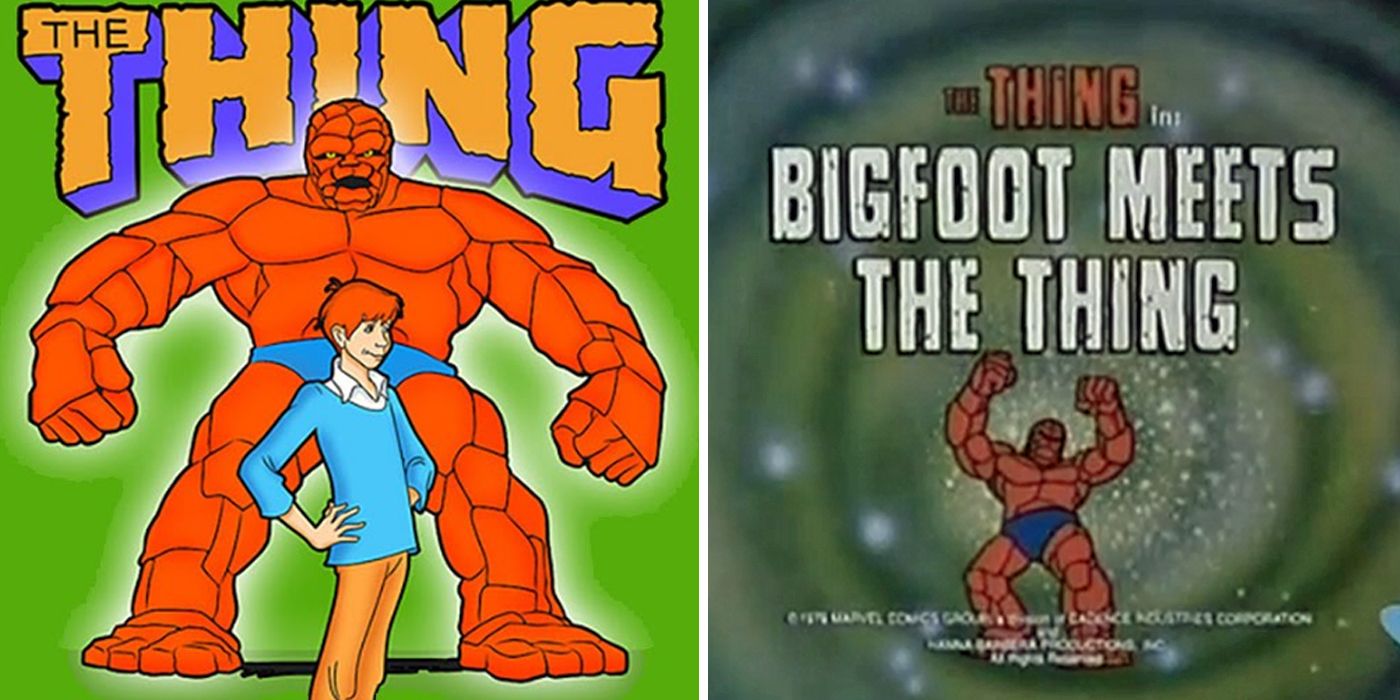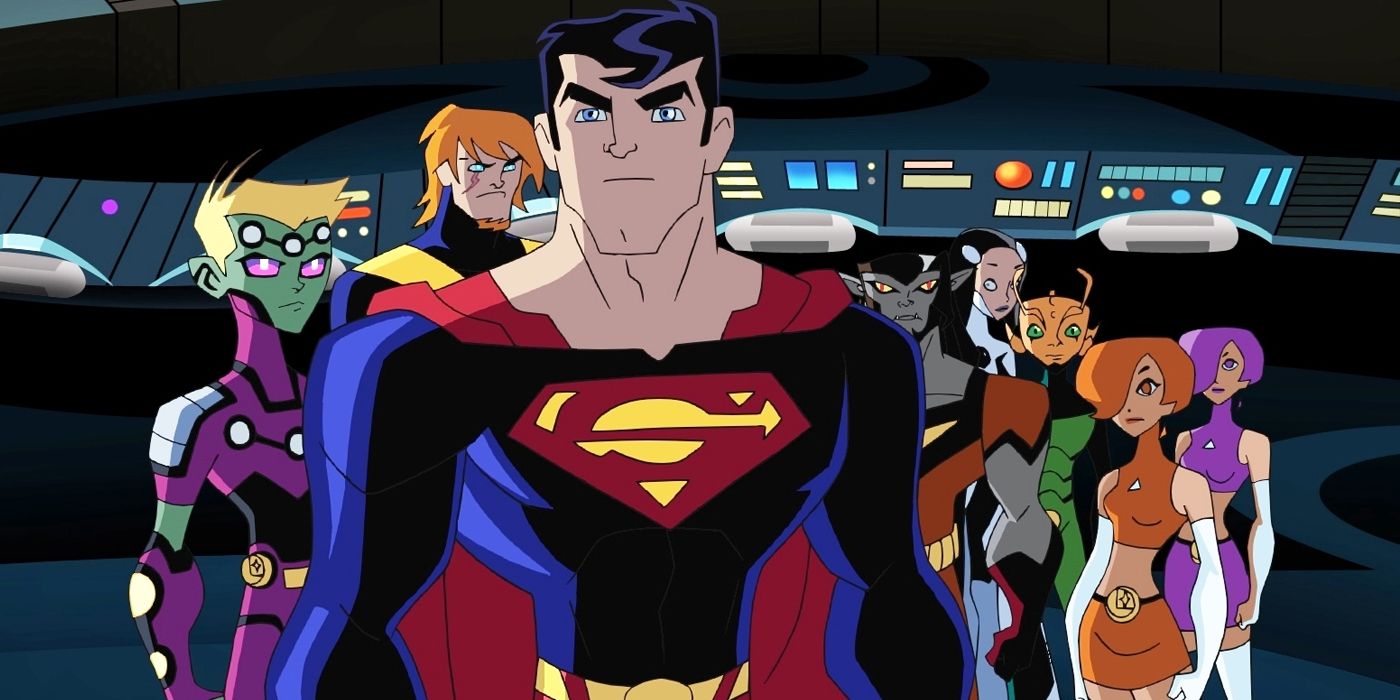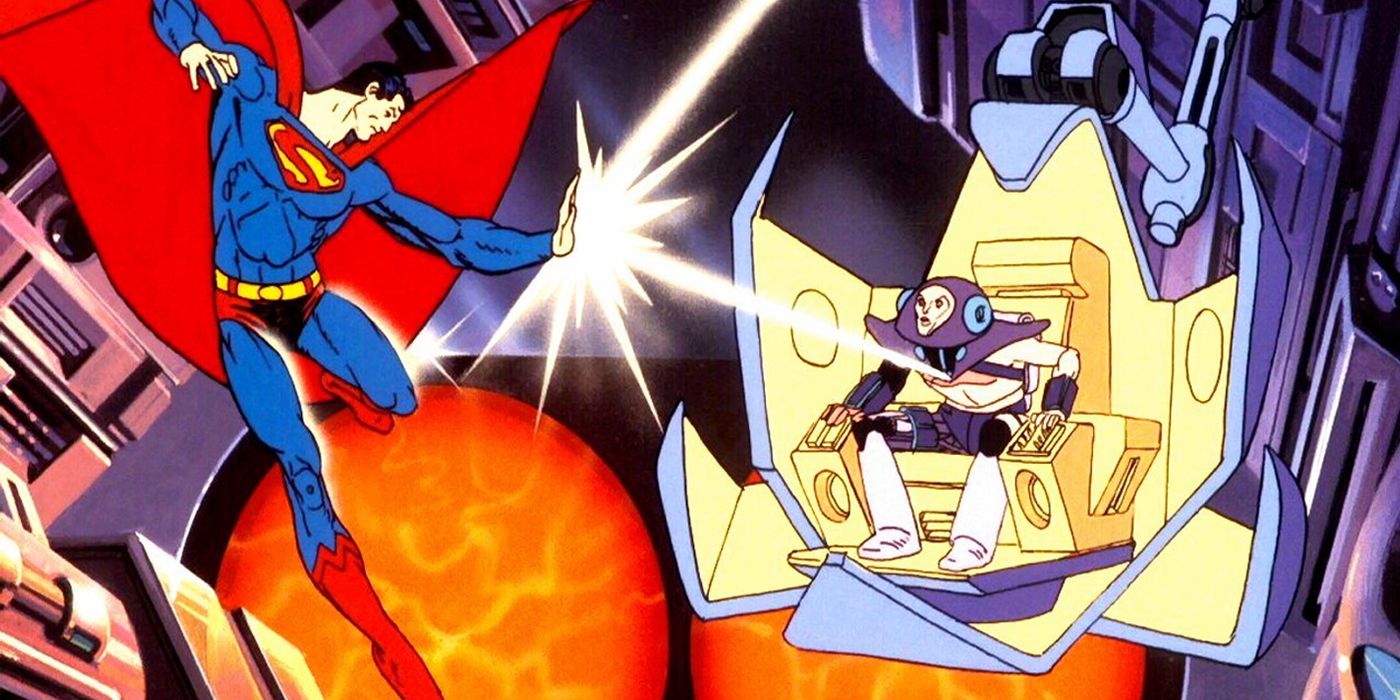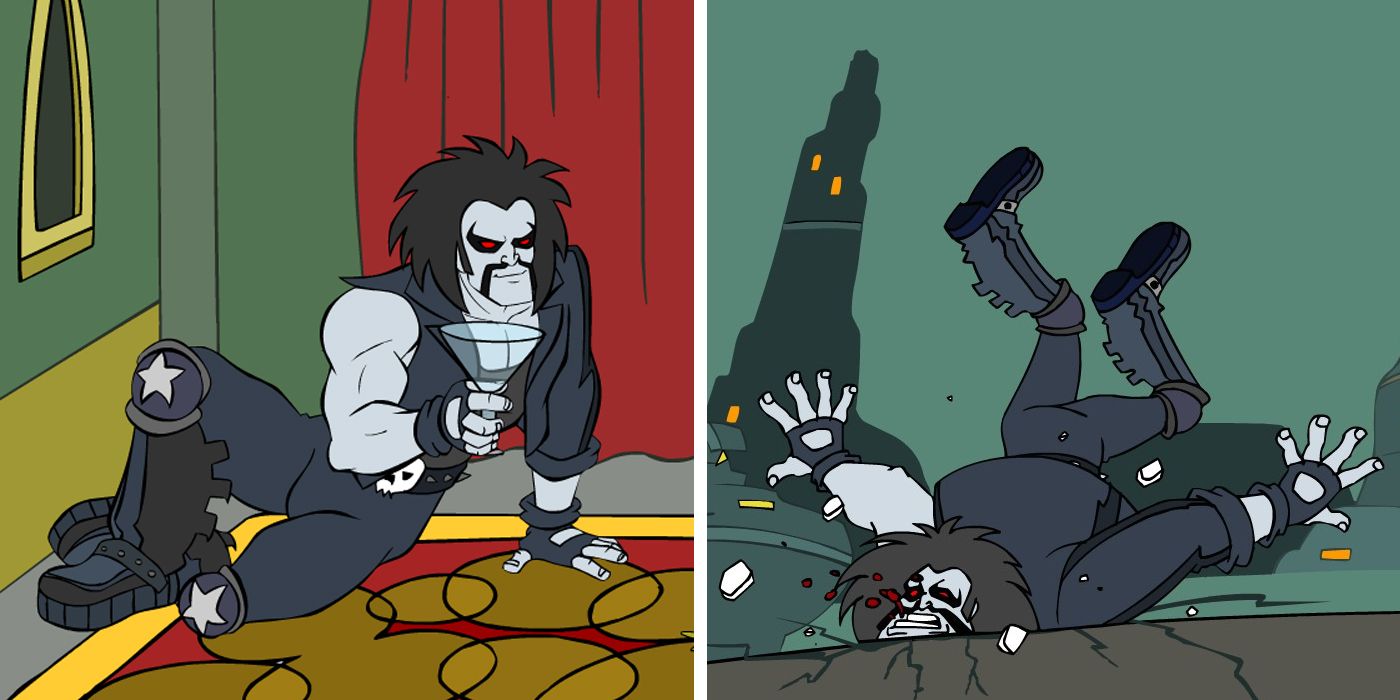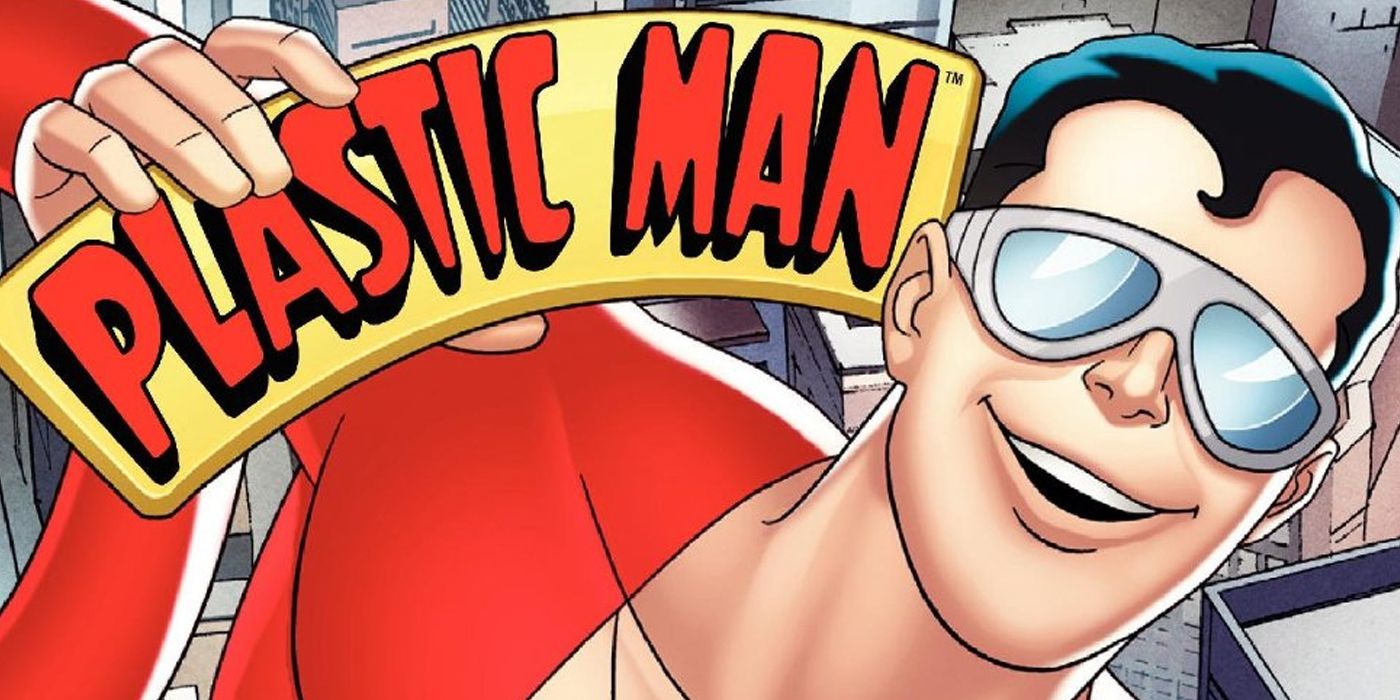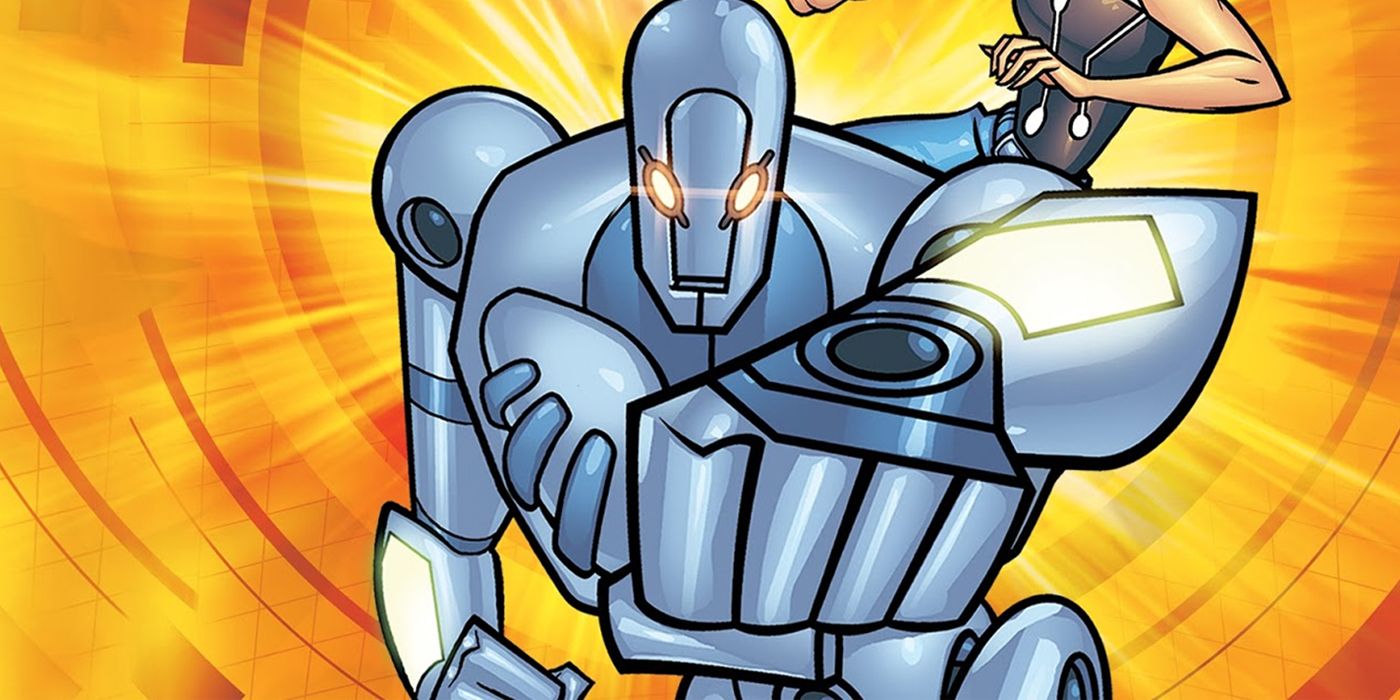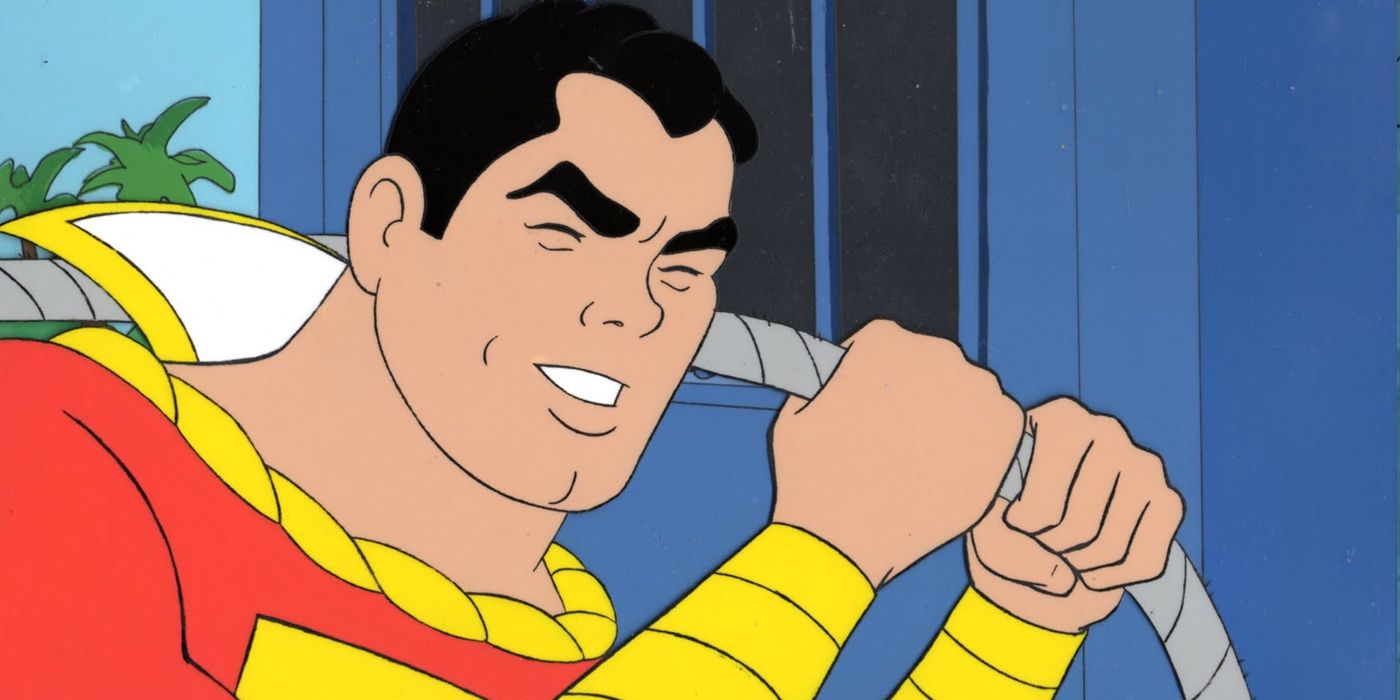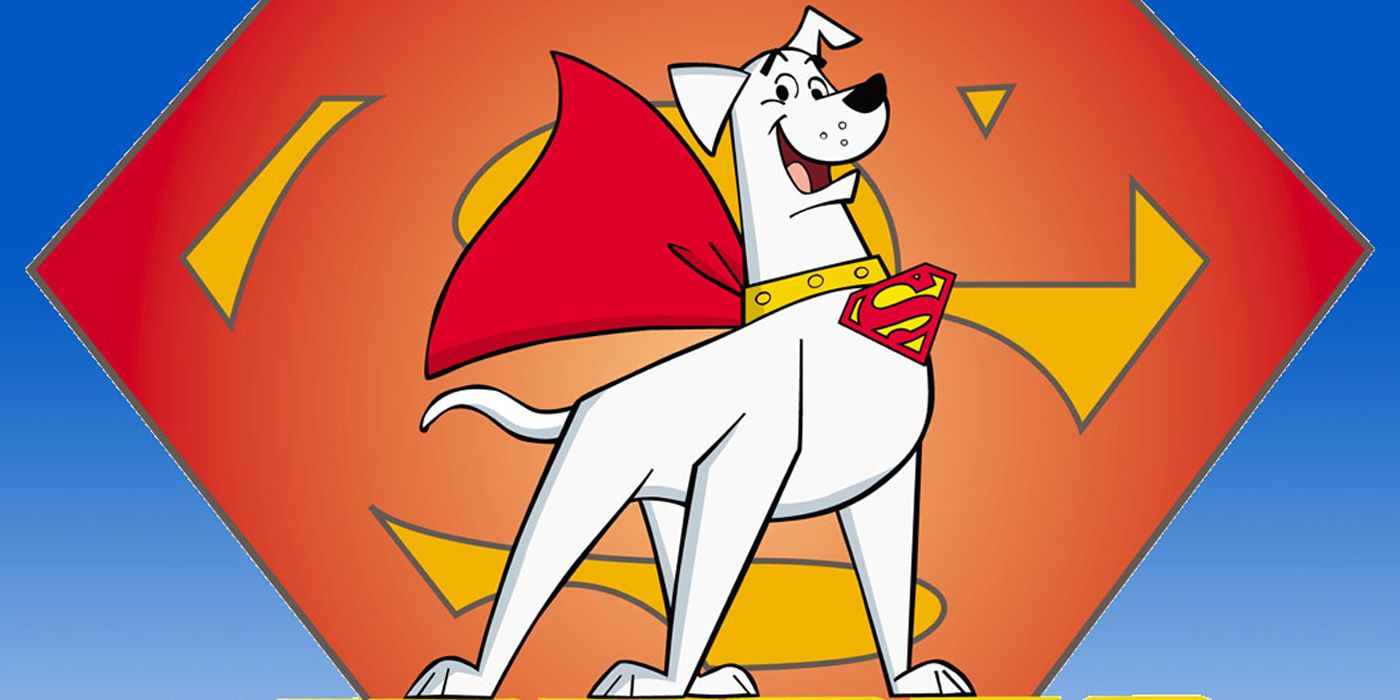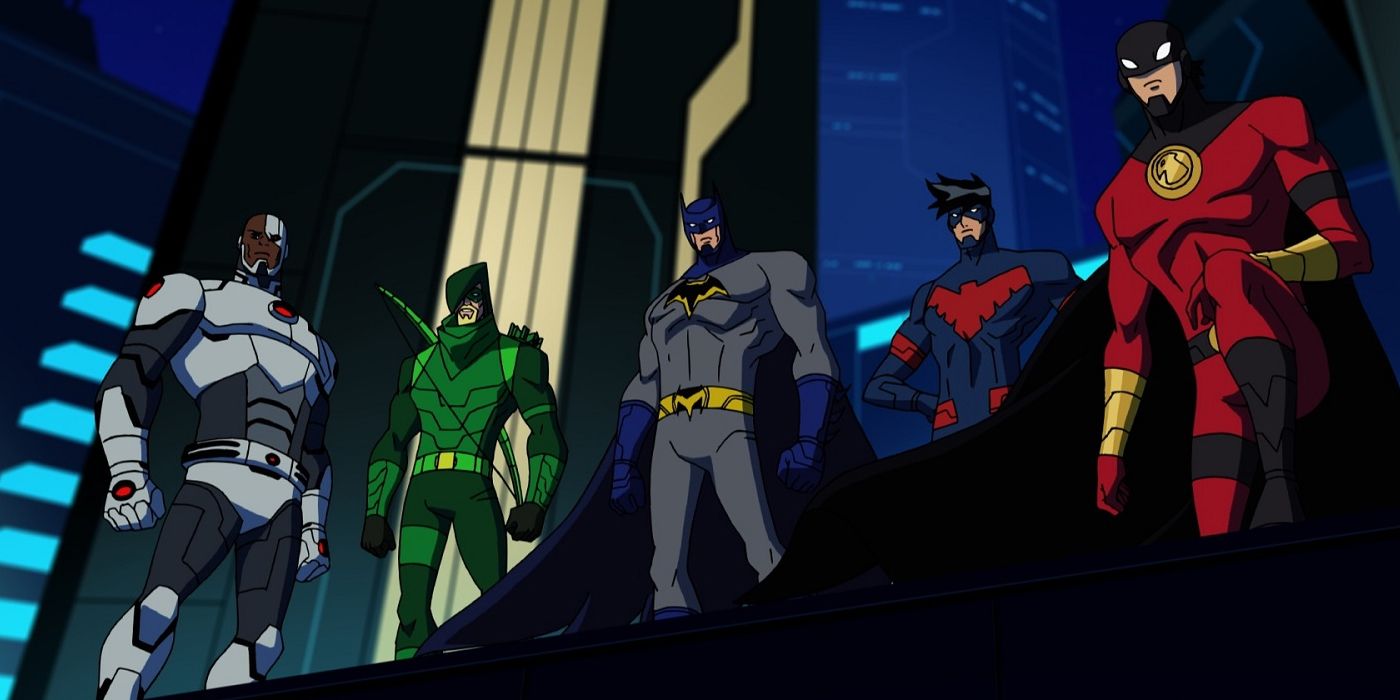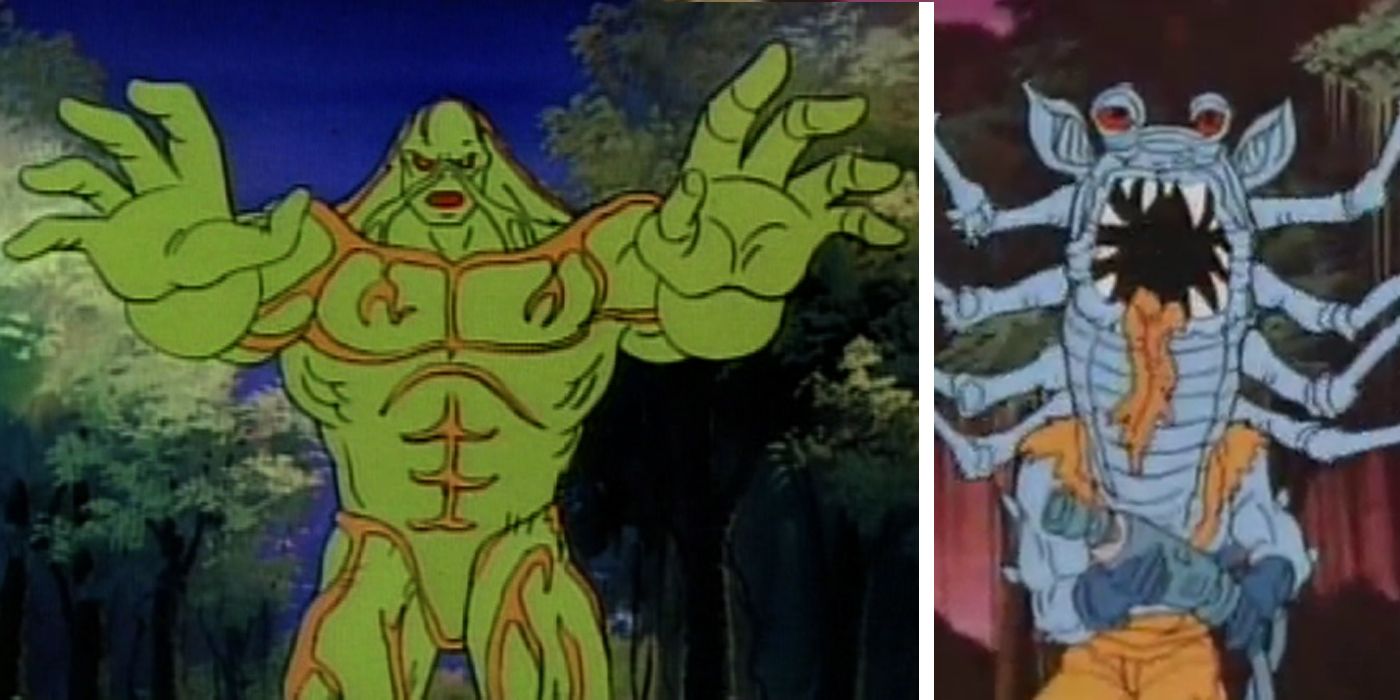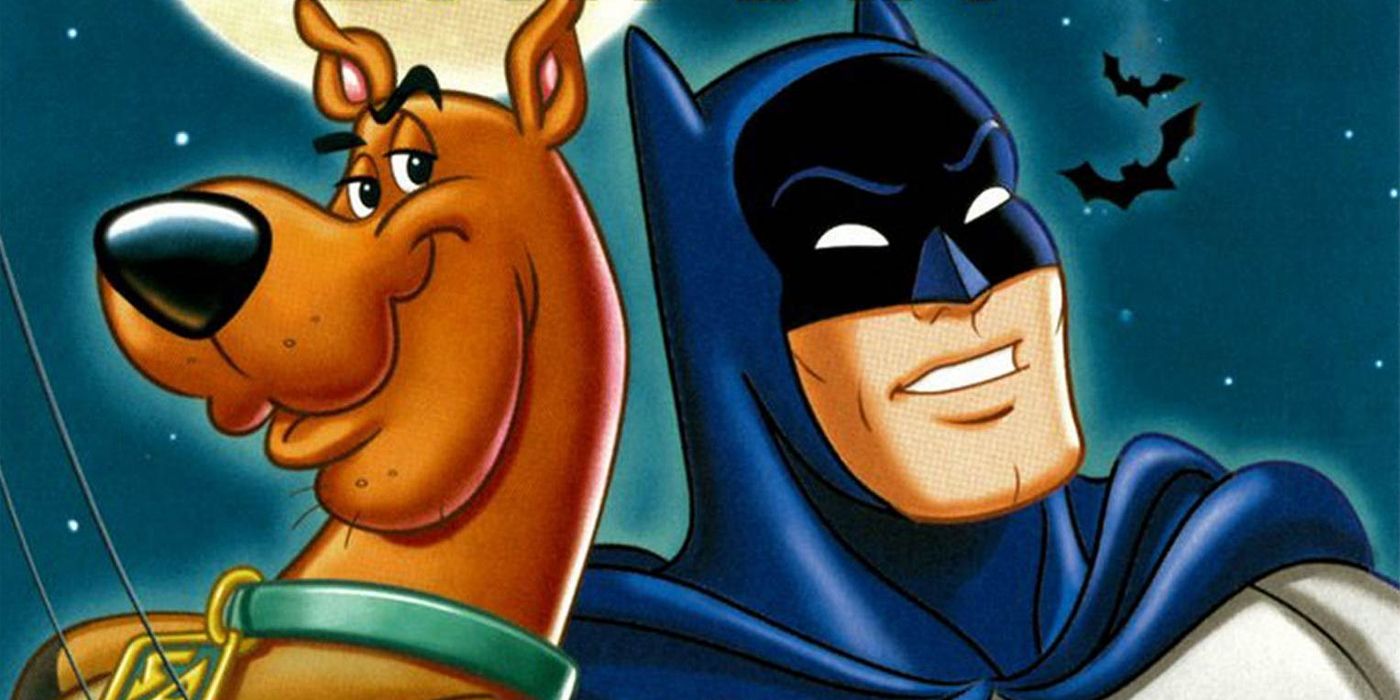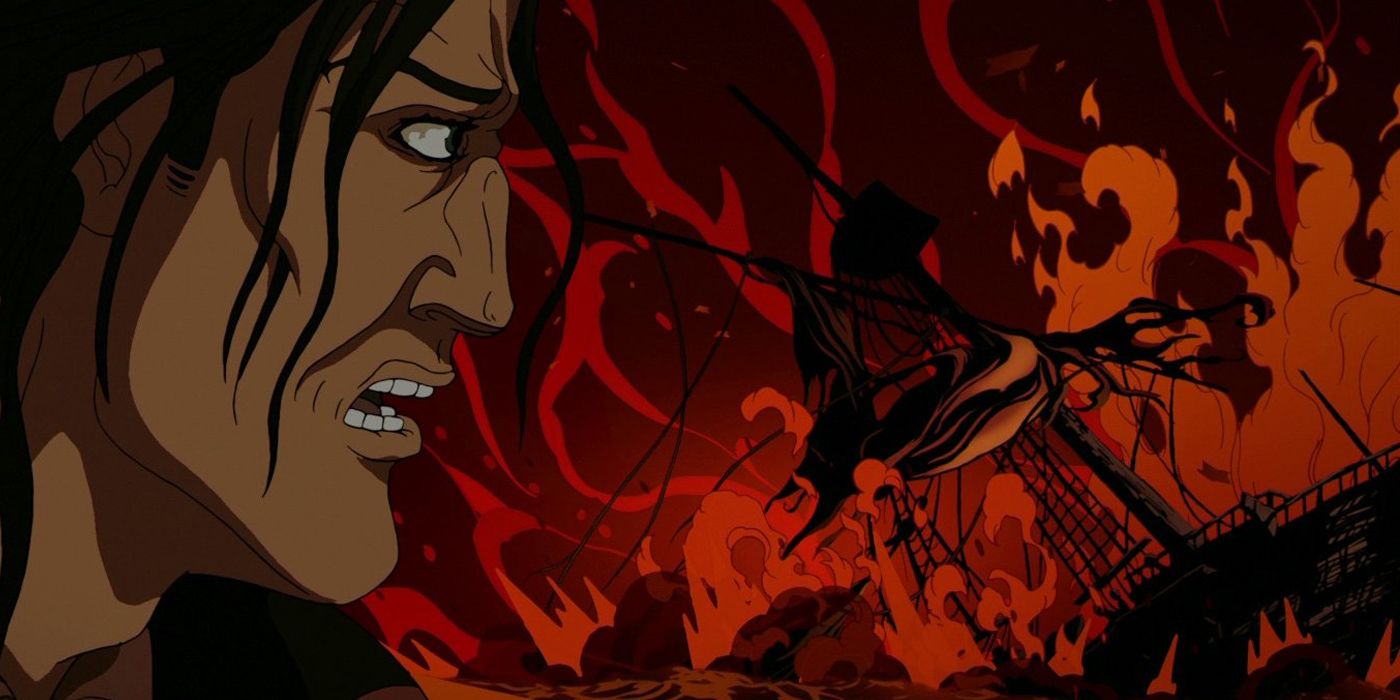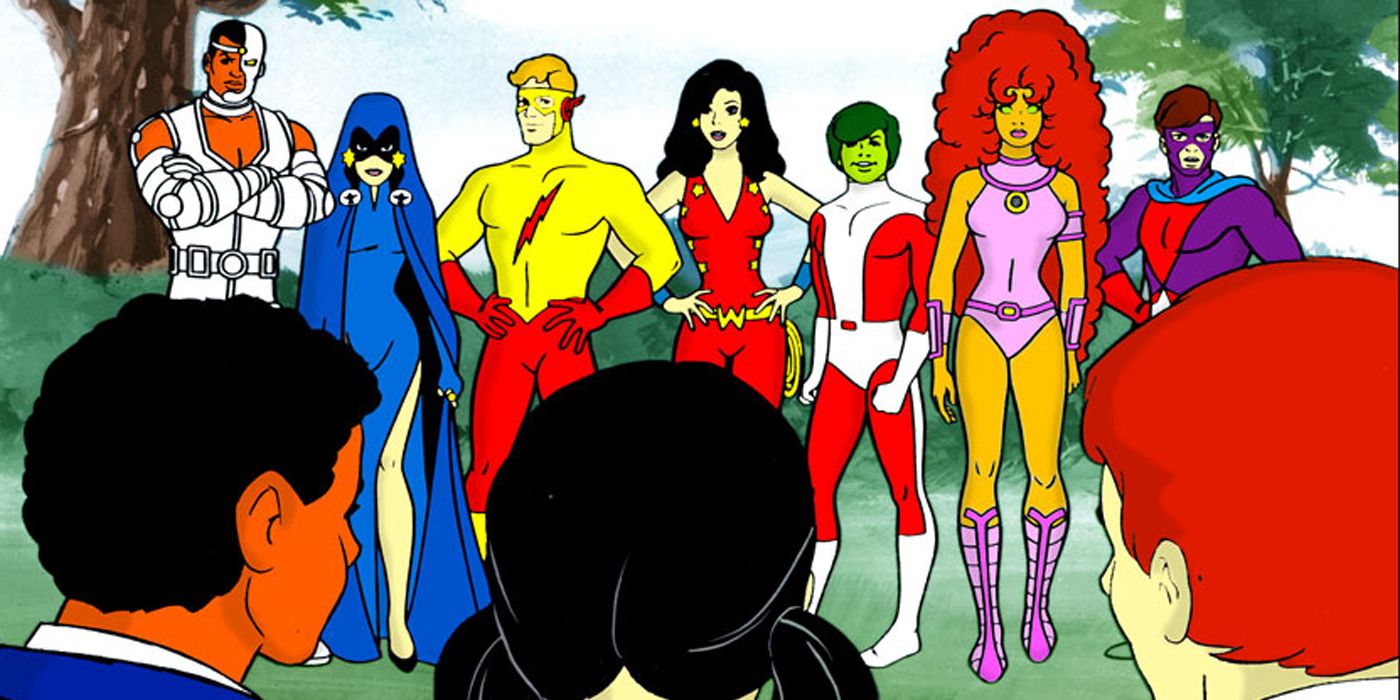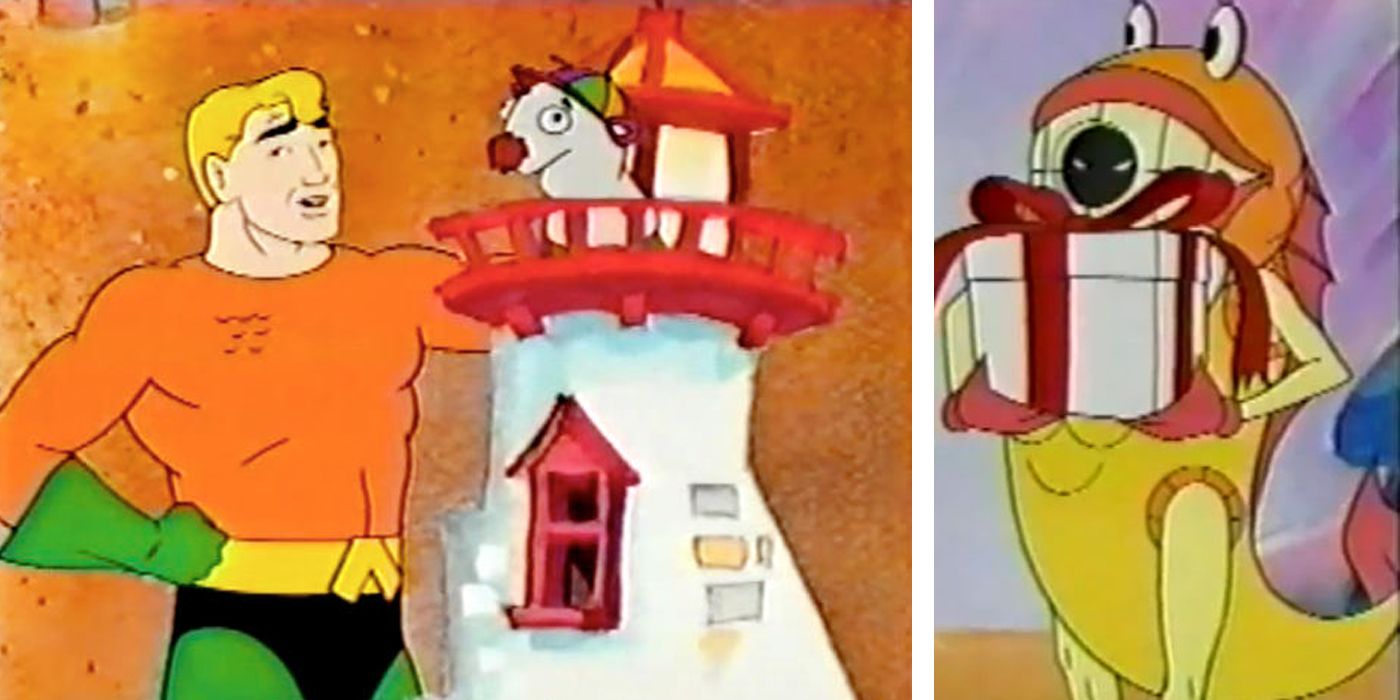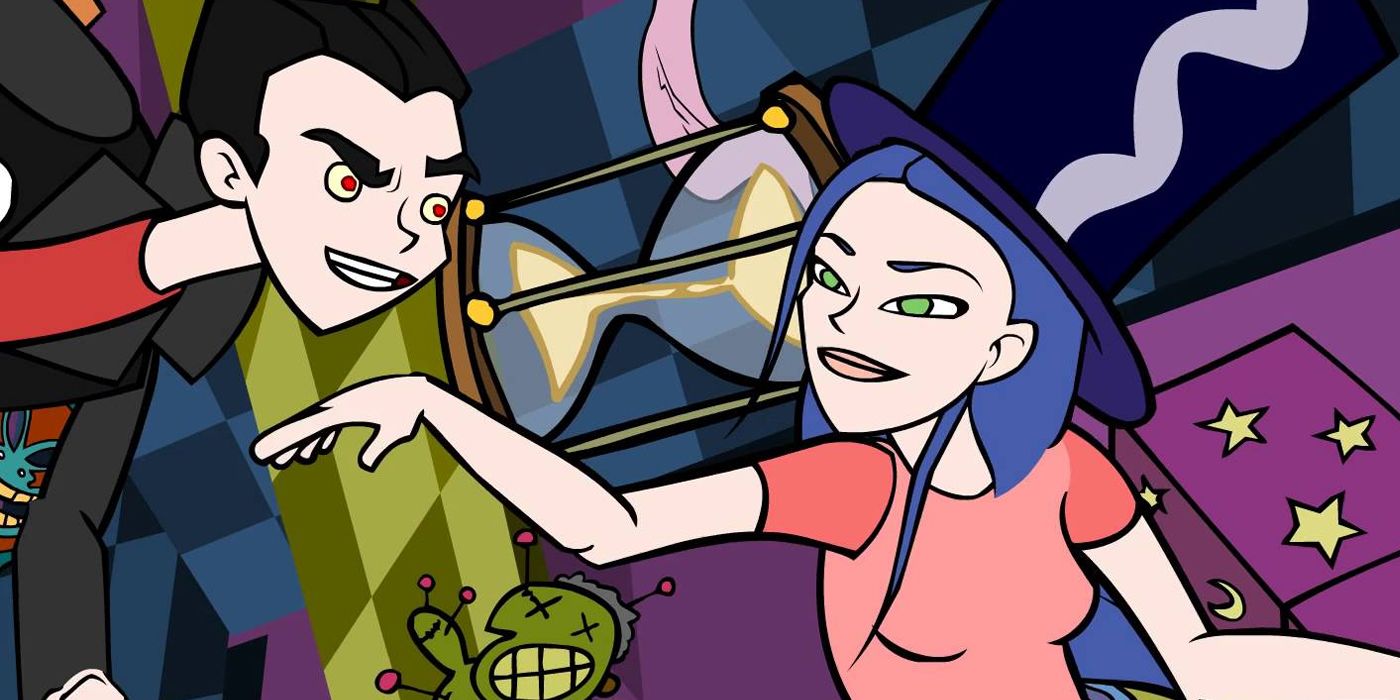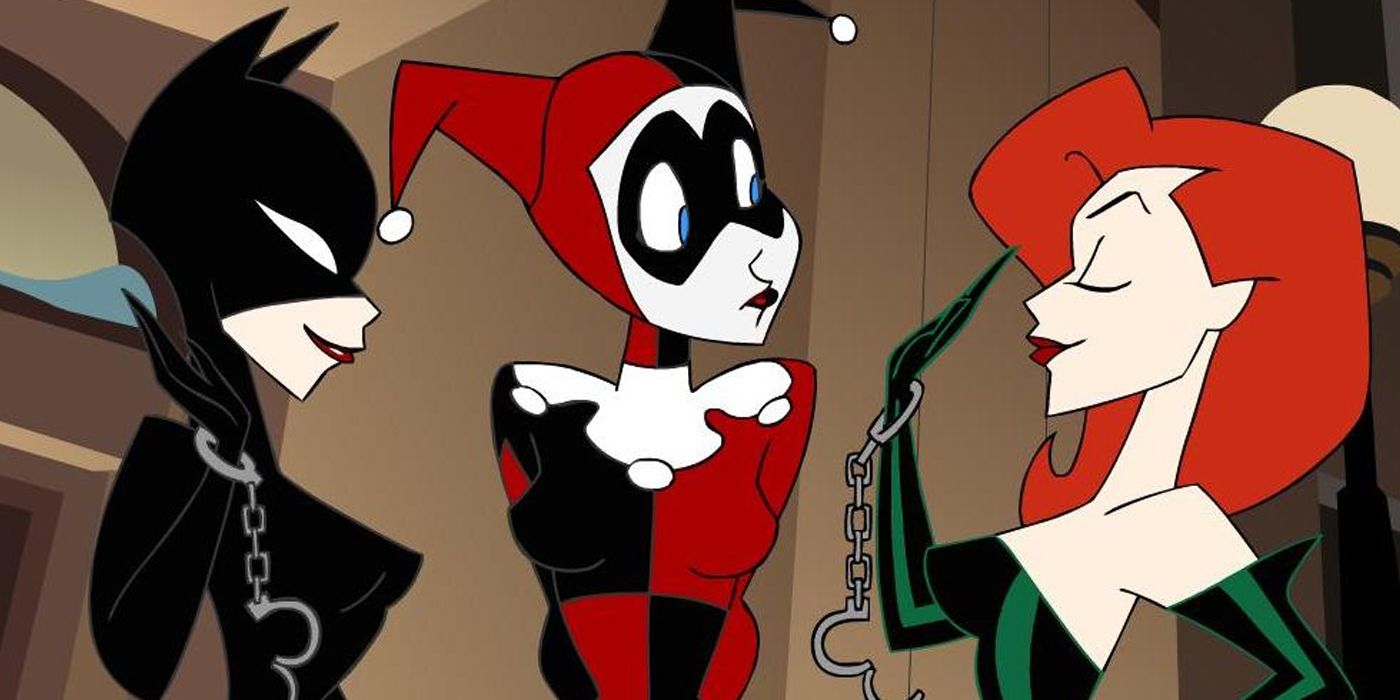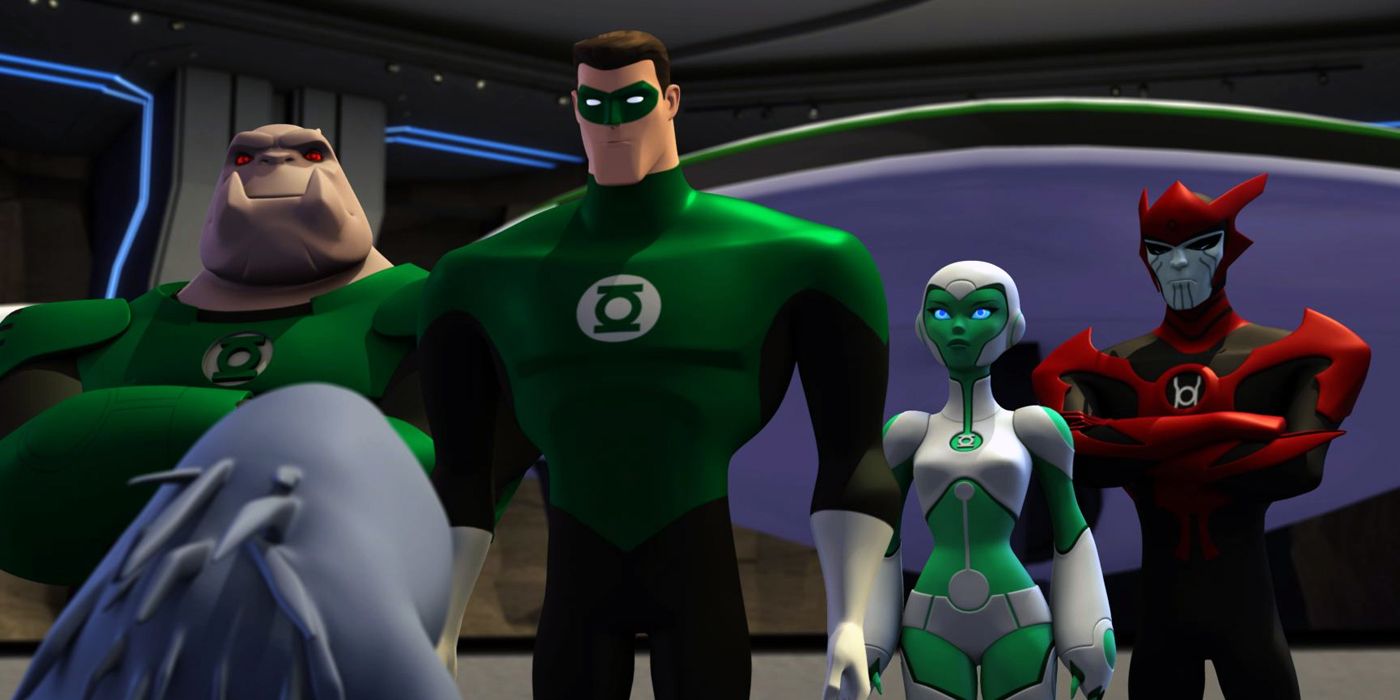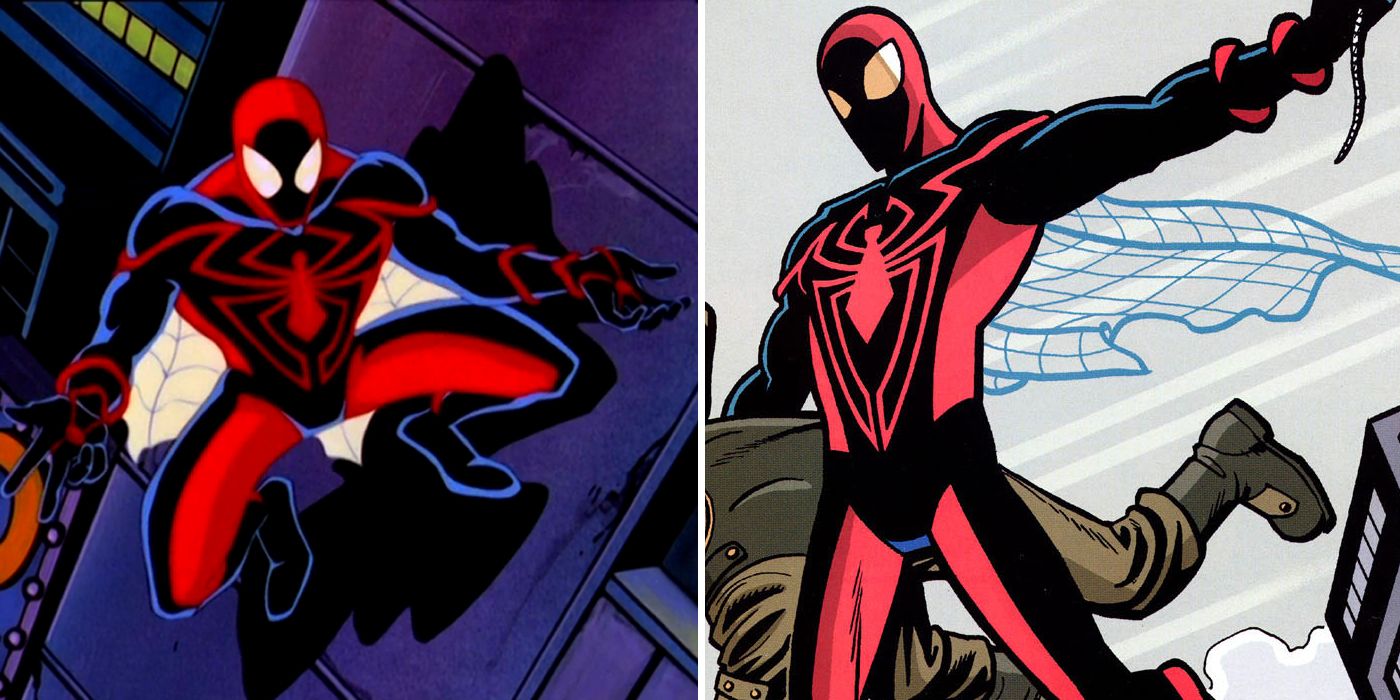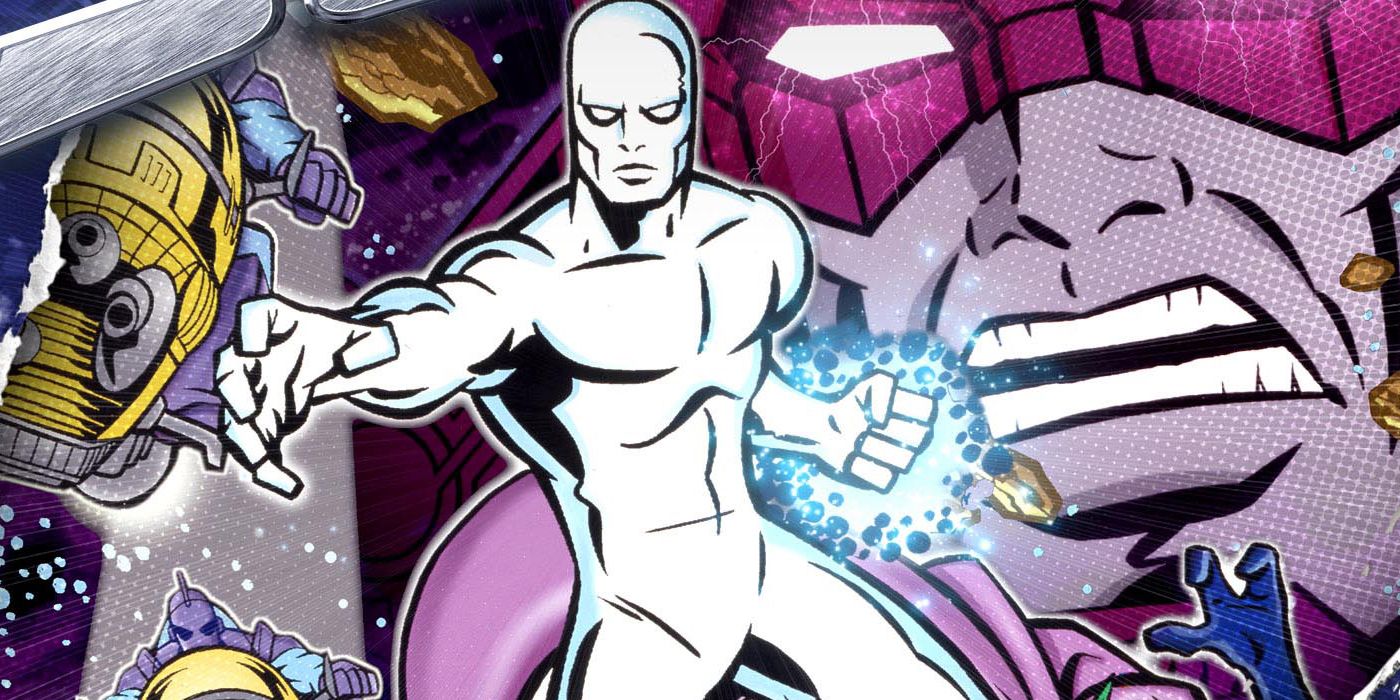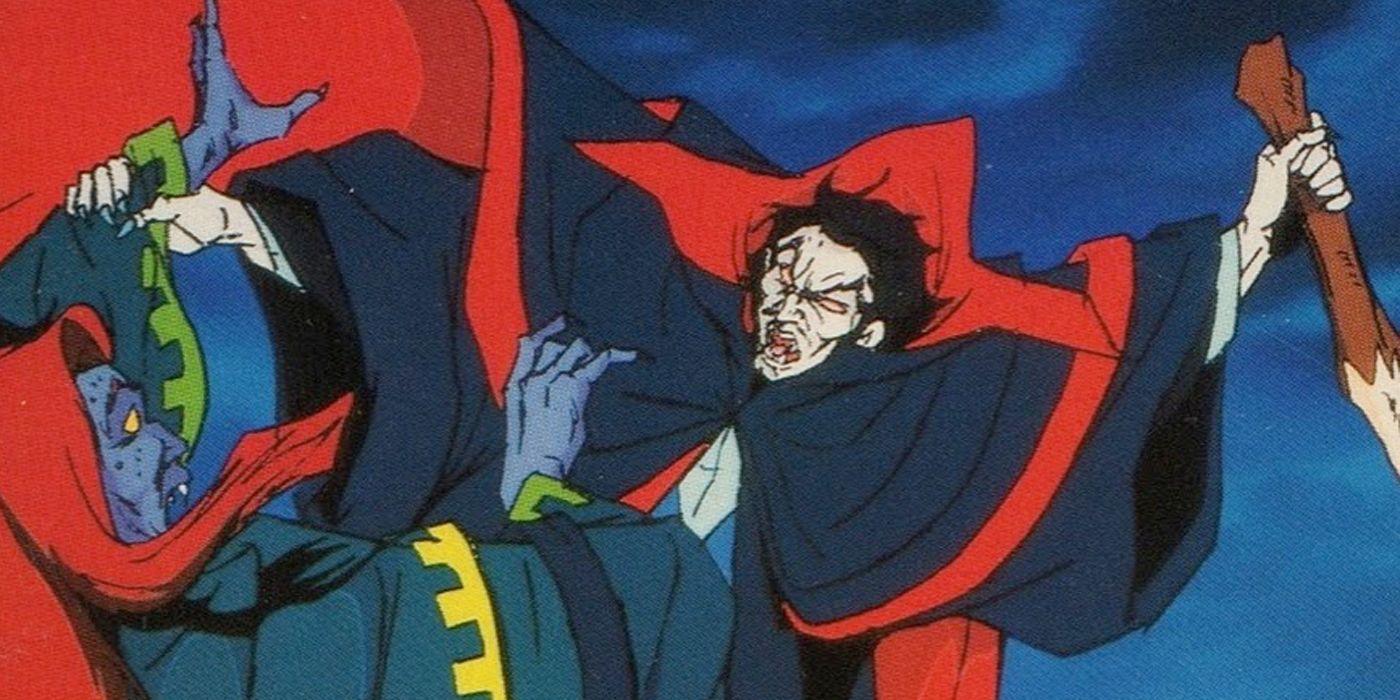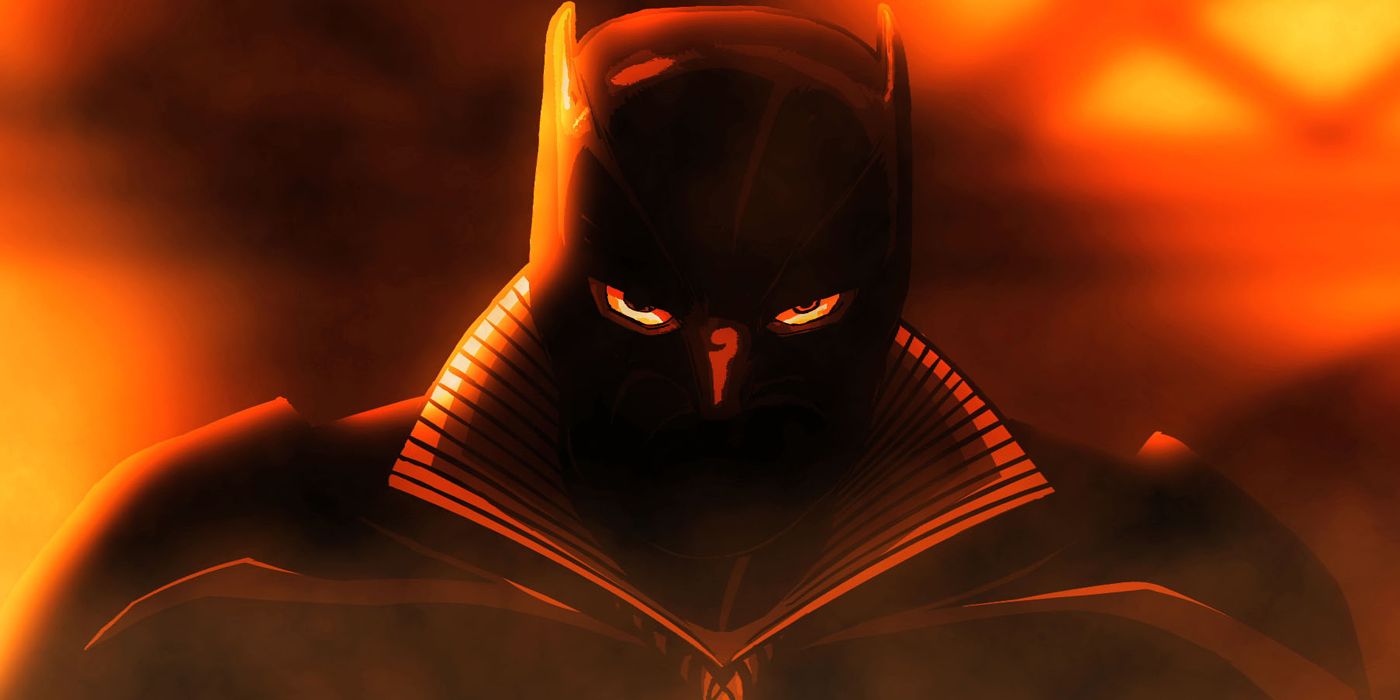Superhero cartoons have been a dominant force in animation for decades. From Fleischer Studios' Superman cartoons of the early 1940s to the ongoing success of shows like "Avengers Assemble" and "Young Justice," characters from Marvel Comics, DC Comics and independent publishers have thrived on TV screens. While some long-running cartoons have turned characters like the Teenage Mutant Ninja Turtles into pop culture superstars, other superhero cartoons were considerably less successful.
RELATED: 15 Forgotten Cartoons From The 90s
Now, CBR is taking a look back at some of the most forgotten cartoons based on comic books. In no particular order (apart from being grouped loosely by comics publishers), we'll be re-examining shows based on characters from Marvel, DC, Image Comics and others. For this list, we'll be looking at cartoons, animated shorts, movies and animated web series that were officially released or broadcast anywhere in the world.
50 LEGION OF SUPER-HEROES
After the success of “Justice League Unlimited” and “Teen Titans,” the Legion of Super-Heroes was DC’s next logical choice for a team-based cartoon. “Legion of Super-Heroes” debuted in 2006 on the CW’s Kids’ WB programming block. Without any connection to existing DC shows, the series provided an accessible entryway into the convoluted history and expansive roster of DC’s 31st century teenage heroes. The show’s first season had a distinctly Silver Age feel and featured a time-traveling Superboy.
In a parallel to the “Five Years Later” Legion of the late 1980s, the second season of the show jumped two years into a darker, Superboy-less future, replaced instead by Superman X, a clone from the 41st century. As planning for a third season time jump was underway, the series was canceled after 4Kids Entertainment took over the Kids’ WB timeslot. Despite the series' short 26-episode run, it garnered a tie-in comic, “Legion of Super-Heroes in the 31st Century,” that lasted for 20 issues. While the Legion’s only animated series certainly has its fans, its legacy has largely been eclipsed by the popularity of DC’s longer-running team shows.
49 RUBY-SPEARS SUPERMAN
Even though it premiered just four years before “Batman: The Animated Series,” the 1988 “Superman” cartoon feels like a relic of a bygone era. Produced by the animation studio Ruby-Spears, “Superman” aired for one season of 13 episodes on CBS. With the involvement of comic creators Marv Wolfman and Gil Kane, this show was the first to showcase a post-“Crisis on Infinite Earths” Superman. The series incorporated several of that reboot’s changes, including a business-oriented Lex Luthor and a modernized Wonder Woman. With the regular comedic flashback sequence, “Superman Family Album,” the show also chronicled Superman’s traditional upbringing in Smallville.
Despite some stilted dialogue, Ruby-Spears’ “Superman” is the missing link between the traditional simplicity of “Super Friends” and the richer, more complex story-telling of “Superman: The Animated Series.” Despite the cartoon’s quality, the licensing fee for Superman was too high for CBS, and the network canceled the show after a few months. Today, this series is a fascinating footnote that fittingly aired in its entirety during Superman’s 50th anniversary year.
48 LOBO
While most of the series that make-up the DC Animated Universe are revered by legions of fans, a few of DC’s early Flash-based web series have fallen into obscurity. One of these series, “Lobo,” premiered in July 2000 on DC’s web site. Over 14 brief episodes, the series followed the intergalactic bounty hunter Lobo as he carved a path of “Itchy and Scratchy”-esque violence around the universe. The show made frequent use of Lobo’s regenerative healing-abilities in darkly comedic moments that saw Lobo play golf with his own decapitated head before beating someone to death with a severed arm in one episode.
While “Lobo’s” extreme violence, crude humor and mature themes fit the character, it’s still jarring to see in what’s ostensibly a spin-off of “Superman: The Animated Series.” Since this show was released during the days of dial-up Internet, the show included interactive mini-games to help kill time while the now-primitive audio and animation loaded. After one extreme season of “Lobo,” a toned-down version of this character reappeared on “Justice League” in 2003.
47 THE PLASTIC MAN COMEDY ADVENTURE SHOW
Over the years, Plastic Man has only headlined his own comic book series irregularly, but he was still popular enough to star in “The Plastic Man Comedy/Adventure Show” in the late 1970s. Developed by Ruby-Spears as a companion to “Super Friends” on ABC in 1979, this cartoon showed the comedic adventures of Plastic Man, his girlfriend-then-wife Penny, their son Baby Plas, and a Polynesian sidekick named Hula-Hula. Segments starring Plastic Man and his friends were packaged with unrelated cartoons like “Mighty Man and Yukk,””Rickety Rocket,” and “Fangface.”
After three years of new episodes, the series was repacked into 130 episodes and sold into syndication with newly-produced live-action segments. In 2006, a new Plastic Man pilot was produced, based on Kyle Baker’s Eisner-winning run on “Plastic Man.” While this didn’t become a series, the test episode was included on a DVD release of the 1970s Plastic Man cartoon. It also was part of the basis for some recurring Plastic Man shorts that aired as part of the DC Nation programming block.
46 THE ZETA PROJECT
The star of “The Zeta Project,” a shape-shifting android called Infiltration Unit Zeta, debuted as an antagonist on the incredibly popular “Batman Beyond” in 2000. Although the character wasn’t originally designed to headline his own show, “The Zeta Project” premiered on Kids’ WB in early 2001. Over 26 episodes, the series followed the killer robot with a conscience and Ro, his teenage runaway sidekick, as they attempted to evade Agent Bennett and his NSA operatives.
While Zeta’s two seasons had a distinctly brighter tone than “Batman Beyond,” the series is still firmly planted within the DC Animated Universe. Zeta didn’t have any roots in DC Comics, but Batman Beyond, Gotham City and a few related concepts appeared in the show. Unlike Harley Quinn and Renee Montoya, this DCAU-created original character never fully transitioned to the main DC Universe. Although this show was set in the future, Zeta made a cameo of sorts in a few episodes of “Justice League” and “Justice League Unlimited” as a training robot called “Z-8.”
45 THE KID SUPER POWER HOUR WITH SHAZAM!
While it can be difficult to imagine today, Shazam, the hero formerly known as Captain Marvel, was comics’ most popular character in the 1940s. After suing Shazam’s publisher Fawcett Comics out of the publishing industry, DC Comics began licensing Earth’s Mightiest Mortal in 1972 before buying the character outright years later. A few years after a live-action Shazam show ended, kid reporter Billy Batson and his heroic counterpart Captain Marvel made their animated debut in “The Kid Super Power Hour with Shazam!” on NBC in 1981.
Over 12 episodes, Shazam and the other members of the Captain Marvel family battled their signature villains like Black Adam and Doctor Sivana. Several “Shazam!” characters also appeared in the “Power Hour’s” other segment, “Hero High,” a superhero high school cartoon originally built around versions of Archie and the Riverdale gang. Both segments, produced by the Filmation animation studio, were canceled after less than a year.
44 KRYPTO THE SUPER DOG
While super-pets were a regular feature in the early days of super-heroes, they mostly seemed to fall by the wayside as the genre arguably matured. In 2005, the premiere of “Krypto the Superdog” bucked that trend. Over two seasons, the cartoon showed the ongoing adventures of Superman’s super-powered pooch. Since Superman was busy saving the world, Krypto stayed with a boy named Kevin and his Metropolis family.
Over the show’s 38 episodes, Krypto teamed up with other heroic pets like Ace the Bat-Hound and Streaky the Supercat to fight animal villains like the Joker’s hyenas and the Penguin’s penguins. Unlike most other depictions of the character, Krypto could speak to Kevin and the animals in English, or whatever human language was common where the program aired internationally. While the show skewed younger than most superhero series, it was broadcast on Cartoon Network, Boomerang, and Kids’ WB in the United States and was often used to fill a network’s “educational/informative” programming requirement. More recently, Krypto and the other Super Pets appeared in shorts on the DC Nation block.
43 BATMAN UNLIMITED
In the viral video era, DC has embraced short animated segments in a way that few other conglomerates have. From the CW’s “Vixen” to the DC Nation’s 155 shorts, these cartoons have offered spotlights for obscure characters and alternate takes on the company’s icons that have thrived online. In 2015, “Batman Unlimited” premiered on the DC Kids YouTube channel, loosely based on a Mattel toyline of the same name.
As of this writing, three direct-to-DVD “Batman Unlimited” animated movies have also been released. In both the shorts and the films, an accessory-heavy Batman fights crime with Nightwing, Red Robin, Green Arrow, Flash and Cyborg. While this effort could easily have been a perfunctory attempt to raise brand awareness, “Batman Unlimited” is marked by quality animation and fun, light-hearted adventures. In 2014, Warner Bros. Animation released another similar direct-to-DVD production, “JLA Adventures: Trapped in Time.” While DC’s other animated movies have targeted older fans, this well-received cartoon applied “Batman Unlimited’s” brand of kid-friendly adventure to the Justice League.
42 SWAMP THING
After starring in two films and a live-action television series, Swamp Thing was placed in the unlikely position to be DC’s next multi-media juggernaut. Despite the character’s role in pioneering comics for “mature readers,” “Swamp Thing” debuted in the early days of the Fox Kids programming block in 1990. The series chronicled the adventures of the monster that used to be Alec Holland, notably rejecting Alan Moore’s revised take on the character. Along with his allies Tomahawk and Bayou Jack, Swamp Thing battled Anton Arcane and his beastly Un-Men.
While this DIC Entertainment-produced cartoon only lasted for five episodes, it embodied several popular trends of the era. The show’s freakish Un-Men mirrored the kinds of beastly foes common on “Teenage Mutant Ninja Turtles,” and the vaguely environmentalist message of the series echoed that of the concurrently airing “Captain Planet and the Planeteers.” Despite this show’s brief existence, Kenner released over a dozen action figures in an accompanying toyline.
41 SCOOBY-DOO MEETS BATMAN
Since both characters have a penchant for solving mysteries and a history of teaming-up with guest-stars, it’s not too surprising that Batman and Scooby-Doo have crossed paths a few times. The first two televised meetings between the Dynamic Duo and the Scooby Gang took place on “The New Scooby-Doo Movies.” This short-lived Hanna-Barbera series featured team-ups between Scooby and a roster of fictional and real-world guest stars in double-length episodes.
In “The Dynamic Scooby-Doo Affair,” the Scooby Gang teamed up with Batman and Robin to battle the Joker and Penguin and expose a counterfeiting operation. In “The Caped Crusader Caper,” the Dynamic Duo and the Mystery Inc. crew once again took on the Joker and Penguin after they stole an experimental flight suit. In 2011, “Batman: The Brave and the Bold” revisited these meetings in the anthology episode “Bat-Mite Presents Batman’s Strangest Cases!” In this brief segment, Scooby-Doo and his friends were trapped by the Joker and Penguin after attending a “Weird Al" Yankovic concert. Batman and Robin rescued the Scooby gang from the Joker’s deathtrap and defeated the villain.
40 TALES OF THE BLACK FREIGHTER
In the mid-2000s, several big-budget movies were released in conjunction with shorter, supplementary animated films. While this trend only lasted a few years, it provided a logical solution for one of the problems posed in adapting Alan Moore and Dave Gibbons’ “Watchmen.” In the seminal miniseries, “Tales of the Black Freighter” was an allegorical pirate tale that showed what comics looked like in a world that grew weary of superheroes long ago.
In director Zack Snyder’s original plans for his 2009 “Watchmen” movie, the Black Freighter segment would’ve been a live-action interlude, visually modelled in a similar style to his adaptation of “300.” After those plans were scrapped, the animated version of the Black Freighter, which starred Gerard Butler, was supposed to be included in the film’s theatrical release. Since that film was already nearing the three-hour mark, the 26 minute Black Freighter segment was excised and released on DVD with some other supplemental material. Later in 2009, this “Ultimate Cut” of “Watchmen” reincorporated this segment into a 215 minute-long cut of the film.
39 THE NEW TEEN TITANS' ANTI-DRUG PSA
While “New Teen Titans” was one of DC’s most popular titles in the 1980s, the Titans wouldn’t make the jump from page to screen until 2003. In 1983, Hanna-Barbera was putting together a cartoon that would’ve featured a team consisting of Cyborg, Kid Flash, Raven, Starfire, Changeling, and team leader Wonder Girl. While Robin would’ve remained on “Super Friends,” the series would’ve featured several of the Titans’ usual villains. While ABC never picked that series up, this version of the Titans made their only animated appearance in an anti-drug public serve announcement.
As part of the President’s Drug Awareness Campaign, this ad featured the familiar Titans and a new character named the Protector. Since the Keebler Company co-produced the ad, the Protector, an original character, was included in place of Robin, who was licensed to Nabisco at the time. While the one-minute commercial reportedly aired during Saturday morning cartoons in the 1980s, the complete ad has been lost to time. The only extant footage of the cartoon comes from a marketing video released by DC in 1984.
38 THE AQUAMAN AND FRIENDS ACTION HOUR
After decades of being a punchline to tired jokes, Aquaman seems like he’s finally poised to be taken seriously by the general public. While DC has spent decades trying to rebuild the character’s reputation, a short-lived 2003 series threatened to cement his status as a laughing stock to a new generation. In the days when Adult Swim was filled with shows that remixed old Hanna-Barbera cartoons into absurd comedies like “Space Ghost Coast to Coast,” Wild Hare Studios produced “The Aquaman and Friends Action Hour.”
Over seven episodes on Cartoon Network Latin America, the show reconfigured the Aquaman of “Super Friends” into a Krusty the Clown-esque kids show host. While most of the other “Super Friends” were off-limits due to their roles on “Justice League,” the Legion of Doom appeared as a cash-strapped organization that was subletting space in the Hall of Doom. While a conceptually similar series of interstitials involving Aquaman, Wonder Woman and the Powerpuff Girls aired in the United States, none of these shorts has even been released in the U.S.
37 ZATANNA
In another early Flash-animated web-series, DC’s magical hero Zatanna appeared in two shorts as part of the Noodle Soup Productions contest anthology “Cartoon Monsoon.” “Zatanna” featured a teenage version of the title character that was heavily indebted to then-popular shows like the “Sabrina: The Animated Series.” Despite the fact that the two-episode series can be viewed entirely in less than five minutes, Klarion the Witch Boy and her father Zatara both appeared. They were joined by her brother Damon, an original character who did not have any powers. Although the shorts had a mildly catchy theme song, the series was critically derided and no further episodes were produced.
After the failure of this series, a teenage version of Zatanna was featured in the recently-revived “Young Justice” to considerably better results in 2011. Once again, her father Zatara appeared and she fought Klarion the Witch Boy as a member of the teenage hero team.
36 GOTHAM GIRLS
In a move that predated the ongoing shorts series “DC Super Hero Girls” by over a decade, “Gotham Girls” gave a spotlight to some of the DC Animated Universe’s most popular characters. Like “Lobo,” this Flash-animated web-series debuted in 2000 and featured interactive mini-games that killed time while the short episodes loaded. Over three seasons, the show’s 30 episodes chronicled the adventures of Harley Quinn, Poison Ivy, Catwoman, Batgirl, Zatanna and Renee Montoya.
As a spin-off of “The New Batman Adventures,” the web-series featured Arleen Sorkin, Tara Strong, and much of the same voice cast as the iconic cartoon. While earlier episodes of the series were more humorous, the last season of the show told a dramatic serialized mystery. The show even garnered its own spin-off comic miniseries in 2003. Years later, the complete “Gotham Girls” was released on DVD with the first and only season of the live-action show “Birds of Prey.” While the animation is primitive by today’s standards, “Gotham Girls” remains a worthwhile entry in DC’s most popular cartoon universe.
35 GREEN LANTERN: THE ANIMATED SERIES
After "Justice League Unlimited" successfully brought the DC Animated Universe to a close in 2006, Warner Bros. Animation and DC Entertainment gave the Green Lantern his own show in 2011. Even though John Stewart had popularized the character on "JLU," Hal Jordan was the star of "Green Lantern: The Animated Series." Released in conjunction with the 2011 film, "Green Lantern," this show appeared on Cartoon Network's DC Nation programming block and was the first DC series that primarily used CGI animation.
Over one season of 26 episodes, "Green Lantern: The Animated Series" mixed classic parts of the Green Lantern mythology with original concepts and Geoff Johns' then-recent work in comics' "Green Lantern." Along with Jordan, the series featured fan-favorite characters like Guy Gardner and Kilowog and villains like the Manhunters and Red Lantern Corps. Despite the show's solid reviews, the movie's failure ultimately tainted the show's success. After the movie's action figures went unsold, Mattel's plans for a cartoon-based toyline were abandoned, and the series was canceled.
34 SPIDER-MAN UNLIMITED
The long-running “Spider-Man: The Animated Series” of the 1990s was one of Marvel’s biggest animated successes. After that show ended in early 1998, Marvel and Fox were contractually obligated to come up with a new Spider-Man series. At the same time, Marvel and Sony had just signed a multi-media deal that would ultimately lead to the 2002 feature film “Spider-Man.” As a result, Marvel and Fox were forced to combine disparate elements together to create “Spider-Man Unlimited.”
The new series premiered in 1999 as part of Fox’s well-remembered Fox Kids programming block. It starred a familiar Spider-Man who had been transported to Counter-Earth, a strange world ruled by the High Evolutionary and his human-animal hybrid Beastials. The show lasted for 13 episodes before the series was canceled. Although ratings were decent, the show was eclipsed by a surging “Pokémon” and “Batman Beyond,” which had already discouraged producers from adapting “Spider-Man 2099” for this series. Despite the show’s brevity, this Spider-Man garnered a six-issue tie-in series by Marvel, and unofficially appeared as a corpse with a broken neck in 2014’s “Spider-Verse” crossover.
33 SILVER SURFER
After some guest roles on the moderately successful “Fantastic Four” cartoon of the mid-1990s, the Silver Surfer made the leap to his own series in 1998. In the show, Norin Radd became the Silver Surfer, a Herald of Galactus in order to save his home-world Zenn-La from the Devourer of Worlds. After discovering Earth, he was struck by the planet’s similarities to his home and broke free of Galactus’ control. While the Fantastic Four were not featured, this show explored a slightly rearranged version of the cosmic Marvel Universe, featuring future “Guardians of the Galaxy” players like Gamora, Drax and Thanos.
“Silver Surfer” blended traditional cel animation with computer generated effects to create a distinct facsimile of Jack Kirby’s dynamic artwork. The Fox Kids show even garnered some acclaim for its highly-serialized, relatively complex stories. Despite robust ratings, only 13 episodes of the show aired. Although more were written, the second season never materialized due to complications from Marvel’s 1998 bankruptcy.
32 DRACULA: SOVEREIGN OF THE DAMNED
Marvel’s “Tomb of Dracula” was one of the best comics of the 1970s. Even if it hadn’t introduced Blade the Vampire Hunter, the series would still be remembered as a landmark horror comic and one of the first finite stories in the Marvel Universe. After Toei Animation adapted that series as a 94-minute TV movie in 1980, that anime was called “Dracula: Sovereign of the Damned” on its 1983 American release.
In that brief runtime, Dracula went on a frantic series of adventures where he fell in love, fought Devil worshipers, befriended children, lost his powers, and became a mugger. While Blade didn’t appear in this densely-plotted anime, Quincy Haker, Rachel Van Helsing and Frank Drake firmly planted the roots of the Marvel title into this anime adaption. As knowledge of the film’s existence has grown in recent years, it’s become something of a minor cult classic. The anime was released on home video in the 1980s but has long since gone out of print.
31 BLACK PANTHER
In the early-2010s, Marvel experimented with directly adapting some well-received stories as motion comics, where comic panels are lightly animated and combined with dialogue and sound effects. “Black Panther” was arguably this effort’s most successful venture. This 2010 series was based on Reginald Hudlin and John Romita Jr.’s 2005 story “Who Is the Black Panther?” The six-episode show was a fairly straight adaption that made a few minor changes to the story where T’Challa avenged his father’s death, teamed up with the X-Men and defended Wakanda from a group of super-villains.
After a long development process, the series debuted on the Australian channel ABC3 in 2010 before airing in the United States on BET in November 2011. The animation studio Titmouse brought Romita’s art to life with a surprising fluidity that recalled the studio’s frequent Adult Swim work. With an all-star cast including Djimon Hounsou, Kerry Washington, and Alfre Woodard, the show was backed by an incredibly strong roster that elevated the material beyond a standard motion comic.

